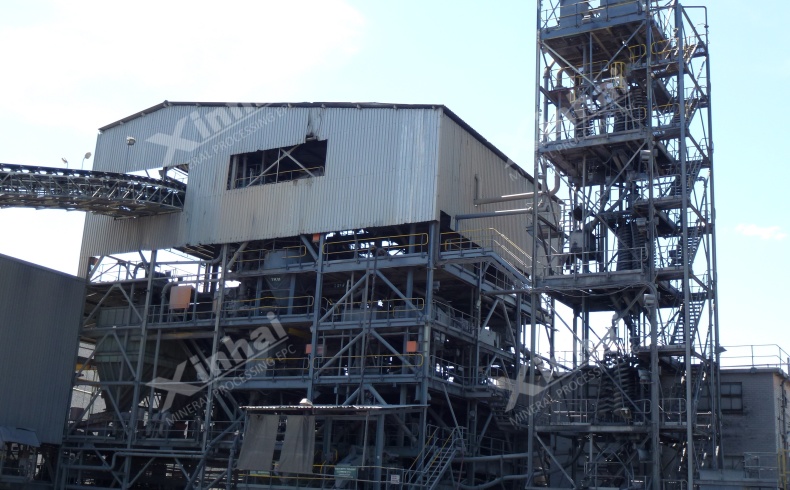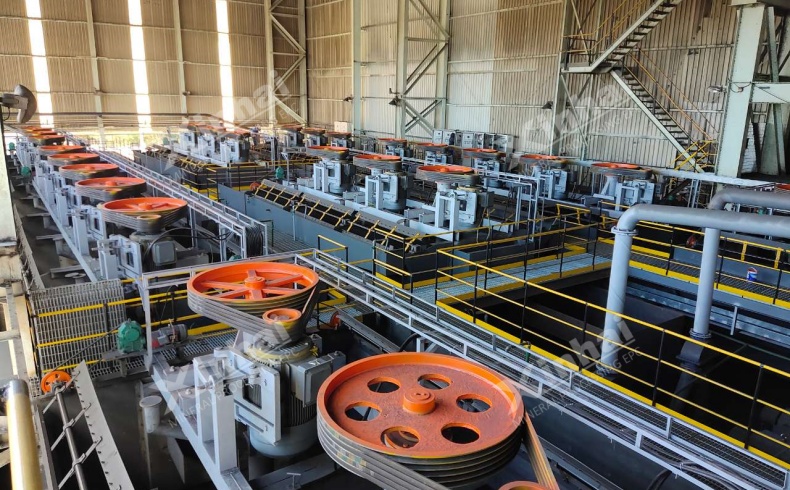If you want to know more information (such as product/process price, etc.), please contact us 24-hour telephone
Chromium, a vital component of stainless steel and superalloys, is predominantly sourced from chromite ore (FeCr₂O₄). While multiple steps are involved to extract chromium from this mineral, chromite beneficiation serves as the cornerstone of pre-treatment, ensuring efficient separation of chromium-rich concentrates from gangue materials. This article delves deeply into chromite beneficiation techniques while briefly summarizing other stages of chromium extraction, aligning with industry best practices and sustainability goals.
Chromite beneficiation is the first and most cost-effective step to extract chromium from chromite ore. This process physically separates chromite particles from low-grade gangue (e.g., silicates, magnetite) based on differences in density, magnetism, or particle size. By concentrating Cr₂O₃ content from 30–60% to over 50%, it reduces energy and chemical consumption in downstream processes like smelting or leaching.

Gravity separation exploits the high density of chromite (4.5–4.8 g/cm³) compared to lighter gangue minerals (2.6–3.2 g/cm³). Common equipment includes:
Spiral Concentrators: Chromite ore slurry is fed into spiral troughs. Centrifugal force pushes denser chromite particles inward, while lighter gangue flows outward. Recovery rates reach 85–90%.
Shaking Tables: A vibrating table separates particles by density using water flow. Chromite accumulates in grooves, yielding concentrates with >50% Cr₂O₃.
Jigging Machines: Pulsating water stratifies ore particles; chromite settles at the bottom for collection.
Case Study: In South Africa’s Bushveld Complex, spiral concentrators upgrade chromite ore from 42% to 48% Cr₂O₃ before smelting.
Chromite is weakly magnetic, enabling separation from non-magnetic gangue (e.g., quartz) or strongly magnetic impurities (e.g., magnetite).
Low-Intensity Magnetic Separators (LIMS): Remove magnetite from chromite ore using magnetic fields of 0.1–0.3 Tesla.
High-Intensity Magnetic Separators (HIMS): Separate chromite from paramagnetic silicates at 1.0–2.0 Tesla.
Example: Turkish chromite mines use HIMS to reduce silica content from 8% to 2%, improving smelting efficiency.
Though less common, froth flotation can separate fine chromite particles (<100 µm) using surfactants. Anionic collectors (e.g., oleic acid) bind to chromite, which is then skimmed from froth. However, this method is energy-intensive and rarely applied to chromite due to its natural hydrophobicity.

To maximize chromium recovery, operators must tailor processes to ore characteristics:
Particle Size: Chromite liberation occurs at 0.1–1.0 mm; crushing/grinding is calibrated to avoid over-pulverization.
Feed Grade: Low-grade ores may undergo multi-stage gravity-magnetic circuits.
Water Usage: Closed-loop water systems minimize waste in arid regions.
Innovation: Sensor-based ore sorting (e.g., XRT scanners) automates chromite detection, boosting productivity by 20% in pilot trials.
While chromite beneficiation prepares the ore, further steps are required to extract chromium:
Pre-concentrated chromite is smelted with coke in electric arc furnaces (2,600°C) to produce ferrochromium.
Chromite reacts with Na₂CO₃ and CaO at 1,100°C, forming water-soluble Na₂CrO₄ for leaching.
Electrolysis or silicothermic reduction purifies chromium to >99% for specialty alloys.
Reduced Waste: Pre-concentration cuts smelting slag volumes by 30–40%.
Lower Energy Use: Upgraded ore reduces EAF energy demand by 15–20%.
Cost Savings: Minimizing downstream processing lowers operational expenses.
Conclusion
Chromite beneficiation is indispensable to extract chromium from chromite ore efficiently. By optimizing gravity and magnetic separation, producers achieve high-grade concentrates while supporting sustainable resource utilization. Although advanced smelting and leaching methods finalize chromium extraction, the success of the entire process hinges on robust mechanical pre-treatment.